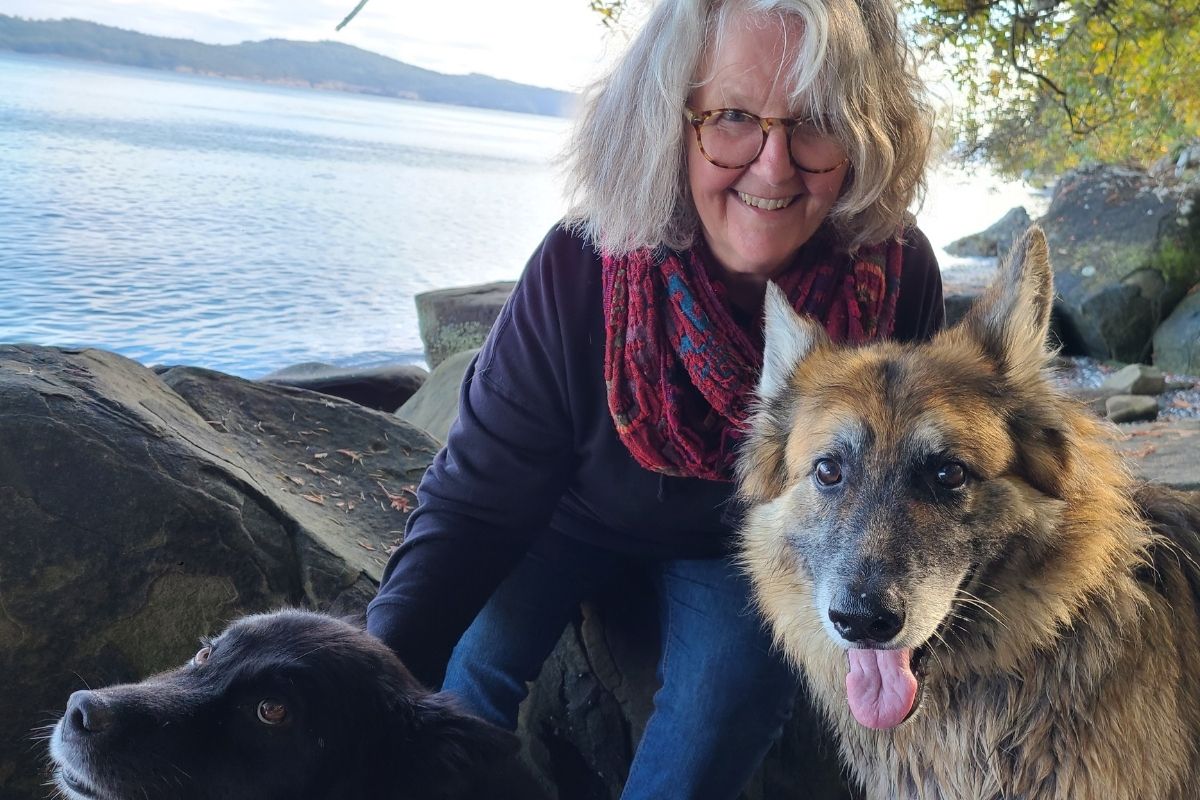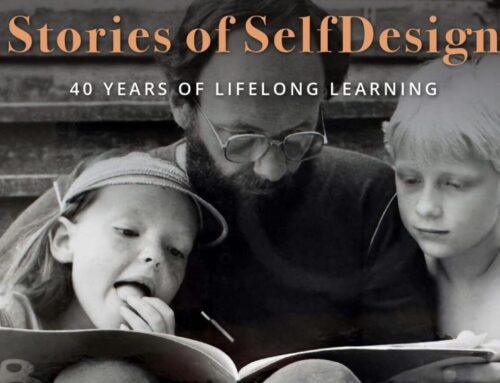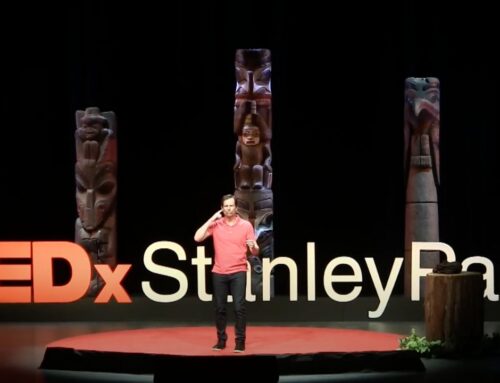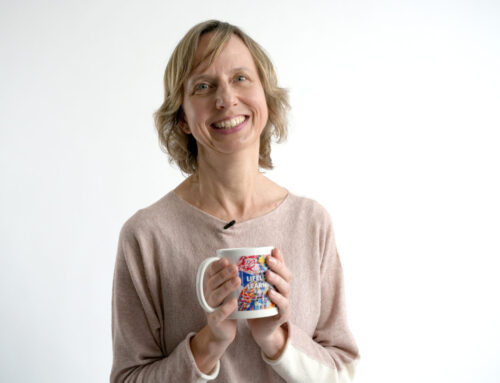In early 2020, SelfDesign learning consultant and Support Education Services Team Coordinator Corinne Metcalfe took on the role of SelfDesign Support Education Services team lead. She brings to the role decades of experience working with children with special needs, including nine years as a SelfDesign learning consultant, 15 coordinating programs for children with special needs at schools around the world, and over 10 years as a special education teacher and inclusion consultant in Alberta. She has also overseen university practicum programs for special education assistants-in-training.
We sat down and talked with Corinne recently about her experiences and insights and her work at SelfDesign.
The following conversation has been edited for clarity and length.
SelfDesign (SD): Please tell us about what you do at SelfDesign.
Corinne Metcalfe (CM): I’m the Support Education Services team lead with SelfDesign Learning Community. I oversee the development and implementation of procedures and projects that support learners with diverse learning needs. I do this work with the support of the wonderful Support Education Services team, as well as support from the Principals team and extensive collaboration with all teams at SelfDesign.
SD: What does the Support Education Services team do?
CM: The Support Education Services team supports learners and their families who have been diagnosed with low incidence needs, as well as learners and families with high incidence learning needs, as defined by the BC Ministry of Education. We want every child enrolled with SelfDesign to be successful. We want every child to participate fully in their learning. Our role is to find ways to support and help the learner and the family achieve the child’s learning goals.
On the Support Education Services team itself, we have almost 70 SelfDesign learning consultants who are trained in special education and in working with learners and families with diverse learning challenges.
SD: How many learners does the Support Education Service team support?
CM: At the end of September, we had 748 learners enrolled with SelfDesign who had what the BC Ministry of Education calls “low incidence needs”. Altogether, close to 900 learners with high and low incidence needs are enrolled with SelfDesign this year.
SD: Describe your background. For many years, you developed and implemented special education programs at schools overseas. Describe that journey for us.
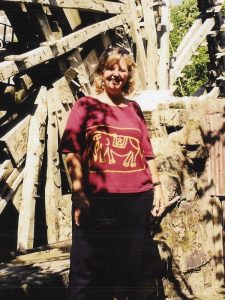
CM: I’ve been working in the field of special education for well over 30 years in a variety of different positions. My bachelor’s degree is in special education, and I have a master’s degree in international education. For 15 years, I coordinated special education programs at international schools in Japan, Kuwait, Syria, and Scotland. I knew from a very, very young age that I wanted – needed – to travel. Having the opportunity to work around the world was a real gift. When you live and work in a place, you really get to know the culture and the country. My home base for many years was a house I bought in Brittany, France. Friends and family would come visit, instead of me going back to Canada. It was an incredible time in my life.
In 2010, I returned to Canada feeling ready to put down roots. I sold my house in Brittany a few years ago, and have found my place in Canada on Salt Spring Island [one of B.C.’s southern Gulf Islands].
Travel was my life for many years. At this time in my life I continue to enjoy travelling, but not with that same sense of need and pull.
SD: How has your international experience shaped how you approach your work at SelfDesign?
CM: My international experience has given me a diverse and global outlook on life, learning and education. In all the years that I’ve worked in special education, what has guided me most – and continues to guide me – is the insight that every child has gifts and abilities that we need to celebrate, acknowledge,nurture and build upon. I honour this in my SelfDesign work.
SD: SelfDesign is known for supporting children and youth who have diverse learning needs. What is it about our program that makes SelfDesign so successful with these children?
CM: I think our success can be related to our highly personalized and learner-centred approach. We focus on where the learner is at, and then we build upon that. We are able to individualize the support we provide, which can be challenging in a public school setting.
Our success can also be attributed to our highly experienced and dedicated learning consultants. We also have many teams working in the background to ensure the success of what we offer to our learners.
SD: What led you to SelfDesign?
CM: It was a number of different experiences and circumstances. When I returned to Canada, I was visiting classrooms for my work with university students, and began to feel discouraged. I observed children struggling when they were faced with barriers to access learning with minimal support. It was around that time that a friend introduced me to SelfDesign, and at about the same time, I also came across SelfDesign on the BC Ministry of Education website, where I was doing some research.
The more I read about SelfDesign, the more it resonated with me. I felt, “Aha! This is the missing piece – relationship, putting the learner first, learner-centred learning, igniting those passions and interests.” I was so excited.
That was the beginning. I’ve been with SelfDesign ever since.
SD: What is it about working with SelfDesign that drives and excites you?
CM: There are so many things. I love how inclusive and accepting we are at SelfDesign.
At the end of the day, however, the learners are what drive me. I can be enmeshed in administrative work, but the heart of my work always revolves around the learner. I can’t imagine doing this work without being involved as a learning consultant.
I continue to work with two learners as a SelfDesign learning consultant, in addition to my role on the Support Education Services team lead. I think it’s critical for the work that I do that I’m still connecting as a learning consultant to learners and families. It’s about knowing what the procedures are and what it’s like, as a learning consultant, to work with those procedures, but it’s also about listening to the families and seeing how our processes work for them – and seeing the areas where there is much to celebrate and other areas that could be frustrating.
SD: What is involved with being a Support Education Services learning consultant?
CM: It’s extremely important to develop a relationship with the family and learner right from the beginning – and to take that time to do that. We recognize that a lot of our families are under stress, so establishing that relationship – that trust – and then easing into the role is a really important piece of our work.
Getting to know the learner, their strengths and interests is also really important, just as it is with any child enrolled with SelfDesign.
We then look at how we can support the child. How can we support what the learner needs to overcome any barriers that they might face? How can we reduce or eliminate those barriers so the learner can participate as fully as possible in their learning? Every child enrolled with SelfDesign Learning Community has a learning plan – that’s their personalized curriculum. The learning consultant works with the child and the family to develop that. We want learners to have access to that learning, so we develop an individual educational plan that sets out that learner’s own particular learning goals. We determine with the family what support is needed, and then we help the family put that in place so that there’s a learning team or support provider to support the learner to realize their learning goals.
Again, relationship, which is key throughout SelfDesign Learning Community, comes first and foremost.
SD: What are some of your best experiences of working at SelfDesign?
CM: During my first or second year at SelfDesign, I was doing a home visit on Vancouver Island. The family lived in a rural setting, and the learner had complex challenges and needs, with limited mobility. When I arrived, the mom bundled up the learner, put him in his wagon, and said, “Okay, off we go.” We went for a long, long walk down this beautiful country lane. There I was, walking with a parent and the learner in his wagon, talking and connecting.
It was such a profound experience. It was at that moment I knew deep in my heart that there was something very, very special about SelfDesign. To develop that kind of connection and to have that kind of experience – and I know it’s not going to happen with every family – solidified for me why I’m with SelfDesign.
Another experience that stands out happened in my first year with SelfDesign, at my house in France. I was working with a family who was travelling through Europe. Every week, they would share their travel adventures and destinations in their Observing for Learning entries.
It just so happened that I was at my house in France when the family was travelling through Brittany, so they came to visit me. The children went to the market with me to buy local food, and we then prepared this amazing French meal in my big old French country kitchen. That evening, we all sat around my long dining room table, talking, eating and laughing.
Once again, it’s that relationship piece, which is so important at SelfDesign. I hosted this family whom I’d never before met in person in my home, but I already knew them so well through our weekly Observing for Learning meetings.

